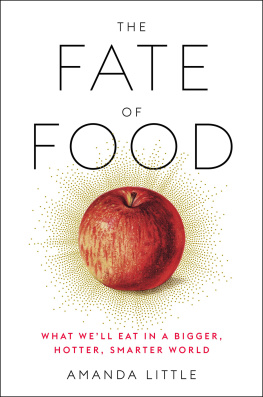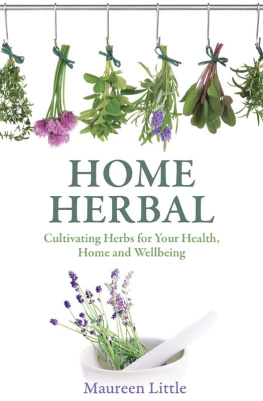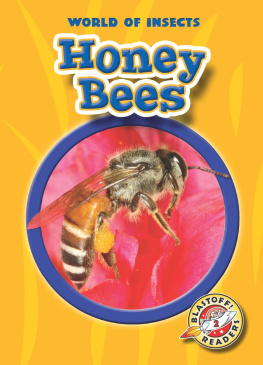let gardens grow, where beelines end,
sighing in roses, saffron blooms, buddleia;
where bees pray on their knees
Carol Ann Duffy, Virgils Bees
As gardeners, we cannot help but be aware of the environment and the responsibility we have for the creatures that live in it. There has been a huge increase in the interest shown in the difficulties facing the honeybee, in particular. Many people, even if they do not wish to keep bees themselves, are asking what can be done on an individual basis to help the bee. This book is a response to that request. I hope that by reading this book we can all be inspired to play our part by providing a bee-friendly environment no matter how much gardening space and/or time we have where bees will come for sustenance, as well as (as Carol Ann Duffy submits) to pray.
One reason for looking at honeybees in particular is that, generally speaking, what is suitable in the way of plants and flowers for honeybees is bound to be acceptable to other flying insects, especially bumblebees and solitary bees.
As well as being a gardener, I also help my friend and bee mentor, Toady, look after his bees. I am not really sure if I am a gardening bee-keeper or a bee-keeping gardener (it depends what I am doing at the time, I think). Either way, both activities have a place in my heart for two reasons. First, they both provide me with food for my body in the shape of fruit and vegetables, and honey. Second, and more importantly, when I am tending my garden or the bees, they provide food for my soul and allow me instances of utter contentment that no material goods could ever afford.
This was brought home to me on one occasion when I was helping Toady check a number of hives which were on a rape crop. It was a beautiful summers day and the bees were contented, buzzing around collecting nectar and pollen and not at all disturbed by my presence. I paused before moving on to the next hive, taking a deep breath and savouring the moment. Then another sound layered itself above the buzzing of the bees. A skylark had begun its heart-lifting song, reaching ever higher. All else melted away: it was just me, the bees, the skylark and a privileged glimpse of heaven on earth. I know that both gardeners and bee-keepers alike will be nodding in acknowledgement.
The majority of people who keep bees today do so as a hobby, echoing, if not directly reflecting, the time when country folk had one or two hives in their gardens, hens in the run, and a pig in the sty. (Back then, of course, keeping livestock was part of the family economy: no animals meant no meat on the table.) My friend, Toady, however, keeps bees on a commercial basis, but the principles of bee-keeping are the same whether you have one hive, a hundred hives, or a thousand hives. They are living creatures and must be nurtured and cared for. Above all you must make sure they can access sufficient food and water to sustain themselves and the baby bees the brood. It is true that commercial bee-keepers will seek out agricultural and horticultural crops for their bees simply because of the numbers involved, but those same bees will also forage in gardens if they are close enough to the hive and have sufficient food growing in them to make their journey worthwhile. This is where the gardener can play a part. By knowing what bees require and then growing plants which supply those needs, the gardener can perform a vital role in the survival of the honeybee, and other bees.
In Chapter 1 we shall be looking at why honeybees are so important and what makes them stand out from the crowd. We shall also consider what they need to thrive and how they detect and access those requirements . Finally we shall touch on what sorts of plants are best suited to provide those needs.
In Chapter 2, I will cover the sort of universal gardening jobs that can be done, especially if you want to create and maintain a bee-friendly garden. The gardening jobs are generally suggestions with a little detail, but if you would like more specific advice, the Royal Horticultural Society website (the address of which can be found in the Further Reading section at the end of the book) is one of the best starting points.
In Chapter 3 there is a season-by-season account of what bee-friendly plants are in flower and what jobs the gardener can be doing during these times.
In case you think I have forgotten about some of the other buzzy insects like bumblebees, you will find some information about these in Chapter 4.
Chapter 5 consists of a brief overview of plant families and looks, too, at which ones are particularly rich in bee-friendly plants. Following this there is a detailed gazetteer of selected bee-friendly plants, arranged by type of plant, in seasonal subsections. For each type of plant you will also find a chart which illustrates in graphic form the flowering times. This way I hope it will be easier for those of you who want to plan a planting area from scratch to choose different sorts of plants which flower at varying times so that food can be provided for the bees for as long a period as possible.
Finally, Chapter 6 contains five illustrative planting plans a culinary herb garden, a potager (large and small), a 3 seasons border and a wild flower garden to give you some concrete ideas of how to put it all into practice!
Hardiness Zone
My experience as a gardener is restricted to the British Isles so all the recommendations I make and examples I give in this book are based on this. Our climate has been categorized as falling generally within Hardiness Zones 8a or 8b so if you are gardening outside the British Isles, adjustments must be made.
Latin names
In nearly all cases I have given the Latin name of the plant first with the common name in parentheses. The reason for doing this is that common names for plants can vary from region to region (a bluebell in Scotland is not the same as a bluebell in England, for example), so knowing the proper, undisputed Latin name is invaluable, especially when it comes to looking for plants in a nursery or online. The exceptions are names for vegetables: there is an unwritten convention that common names are used rather than the Latin ones. You will find a list of common names of plants and their Latin equivalents towards the end of the book.




















